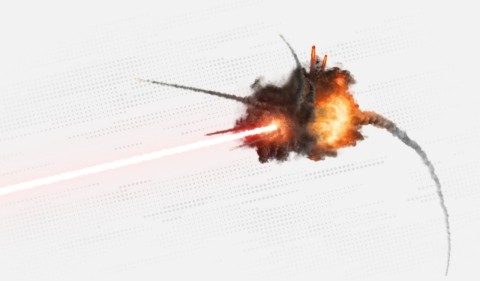One of Lockheed Martin’s principal priorities as a leading aerospace and defense company is advancing innovation, which includes a focus on strategic investments. The corporation’s venture capital arm, Lockheed Martin Ventures, is based in Silicon Valley and is focused on investing in startup companies that are developing the next generation of disruptive, cutting-edge commercial technology from startups that can help solve customers’ complex challenges.
“A small company needs lots of different forms of capital to grow,” said Chris Moran, Lockheed Martin Ventures vice president and general manager, during a recent panel at the 2020 Defense One Tech Summit. “We’re providing this other form of capital to complement what OTAs [Other Transaction Authorities], government grants and other contracts are doing.”

Lockheed Martin and its customers are hungry for innovation. That’s why Lockheed Martin Ventures has committed more than $200 million to invest in startup companies and has invested more than $100 million in startup companies since 2007. These companies are focused on developing emerging innovative technologies that have the potential to become foundational technologies that benefit national security.
Take for example next-generation navigation startup, and Lockheed Martin Ventures portfolio company, Anello Photonics. Investment is a two-way street according to the Anello Photonics CEO Mario Paniccia:
“We get early access to a customer,” said Paniccia, “and someone like Lockheed Martin benefits because they're drafting a commercial application that they don't have to pay for all of it. We're going to a mass market; we drive those volumes up and then the cost down so it's really a win-win.”
Advanced technologies like the ones Paniccia is creating at Anello Photonics can cost tens of millions to develop and commercialize. “The fact that Mario is going to access broader segments and bigger spaces to do this means that a lot of his value is going to be created in the commercial space,” said Moran. While a big value proposition in the commercial space may not necessarily be valuable to Lockheed Martin from an acquisition standpoint, Moran sees value in creating these relationships.
“We'd like to team with or collaborate with these companies to use their tech in the platforms and capabilities that we make,” Moran says. “We would like to see Anello become a long-term supplier to us and our customers.”
Lockheed Martin Advanced Technologies
For decades, Lockheed Martin has been the trusted name developing technologies to maximize safety, performance and situational awareness across land, sea, air, space and cyber.
Looking toward the future, the corporation is investing in four key areas of emerging technology:
Hypersonics

Going Mach 5, or more than 60 miles per minute, creates several complex engineering and physics challenges which is why Lockheed Martin leverages expertise and technology from across the corporation to solve these challenges with speed, agility and ingenuity. As one of the Department of Defense’s highest technical priorities, Lockheed Martin scientists and engineers are developing game-changing hypersonic solutions.
"Lockheed Martin is delivering critical technical capabilities for these national priority programs," said John Varley, vice president, Hypersonics at Lockheed Martin Missiles and Fire Control. "We offer unmatched expertise from across the Corporation which puts us in the best position to rapidly deliver this critical capability to the nation.”
Directed Energy

Directed Energy systems use highly focused energy to disable targets with pinpoint accuracy. Our engineers are at the forefront of transforming high-power laser technology developed for factories into inventive and cost-effective defense capabilities for our customers.
“Our adversaries are rapidly developing sophisticated weapons and the threats are getting more challenging,” said Hamid Salim, vice president at Lockheed Martin Rotary and Mission Systems. “Our warfighters need this capability and capacity now to effectively counter threats such as unmanned aerial systems and fast attack vessels.”
Multi-Domain Operations

For more than a decade, Lockheed Martin has worked alongside the Department of Defense to develop systems, mature critical technologies, and explore concepts of operations that will enable Multi-Domain Operations. The corporation is focused on connecting systems by ensuring every element is a collector, a sharer and a learner to move decision-quality data faster than ever before, allowing our military forces to solve multiple, simultaneous, complex problems at a speed our adversaries cannot match.
"It's about having flexibility and fluidity," said Justin Taylor, Lockheed Martin Skunk Works® director. "Flexibility means the ability to create new configurations by compiling what's available, compiling existing systems, and new ways to outpace and overwhelm the adversary. This is what we're realizing today with our current systems. Fluidity means the ability to shift roles between nodes in mission as the dynamic mission is ever changing and the battlespace is ever changing. We need to be able to actually shift the capabilities and roles of a given platform or a given node based on what's happening in a mission by leveraging those networks of networks."
Artificial Intelligence & Autonomy

On the battlefield and at home, autonomy and artificial intelligence (AI) are rapidly becoming part of daily human experience. Lockheed Martin is building AI systems that give people better control while making people safer and increasing mission success in the toughest, most unpredictable of situations.
"Artificial intelligence, machine learning, autonomy and data analytics are powering Multi-Domain Operations. The speed of warfare is changing. We are building AI and autonomy technology that will keep people in control while enabling them to be safer, more effective and able to focus on higher-level tasks,” said Maria Demaree vice president and general manager, Mission Solutions at Lockheed Martin Space.




